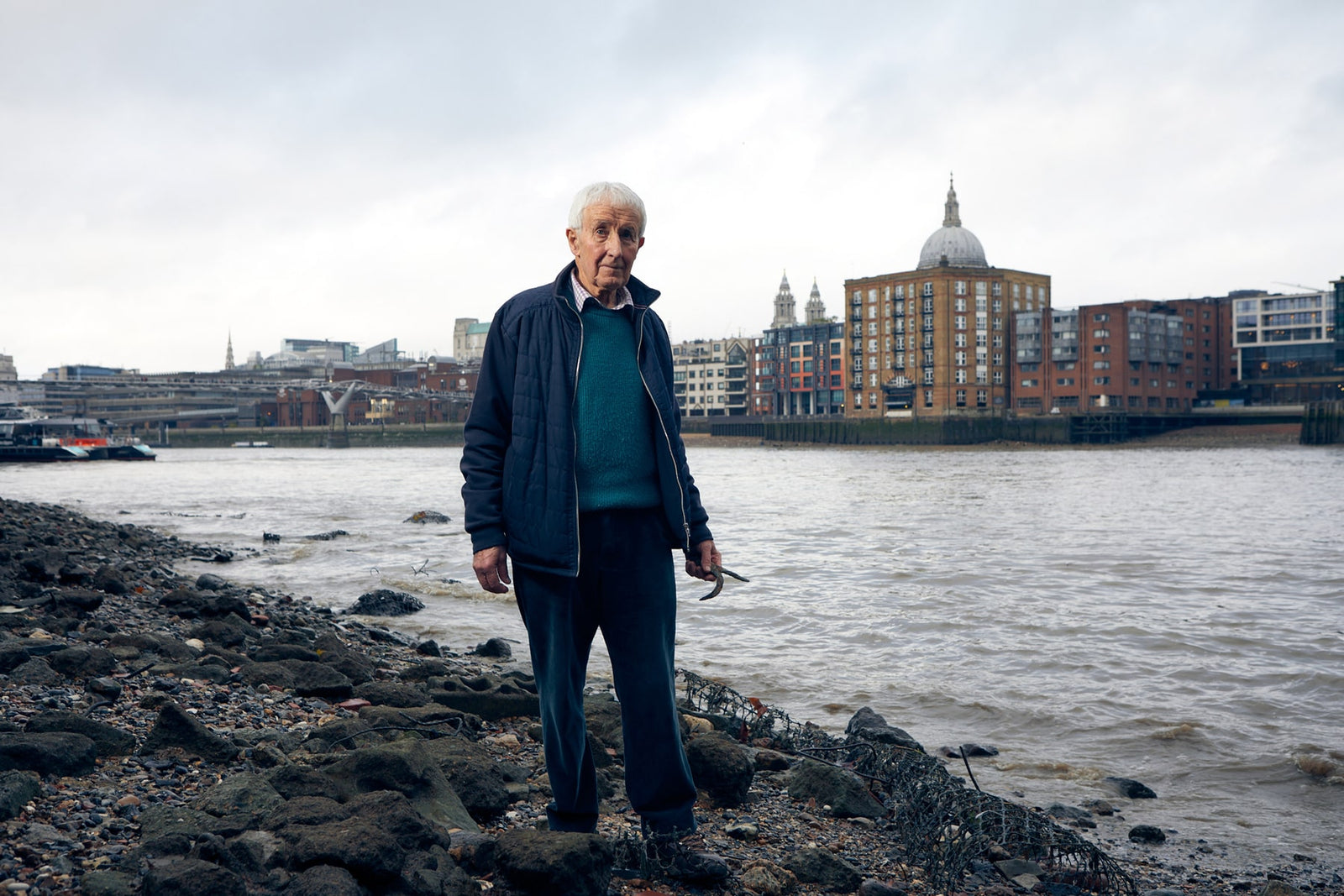Mudlarking the River Thames is a hugely popular pastime for hundreds of people, and if you’re ever in London when the tide is low, the chances are you will see lots of mudlarks searching the foreshore for London’s lost history. But what was it like decades ago?

Recently I chatted to veteran mudlark Graham duHeaume who started to mudlark in the seventies. Graham explained that back then there were about twelve people who regularly met up to mudlark on the north bank of the Thames at Queenhithe, which is the oldest dock in the City of London.

Queenhithe Dock. Photo Credit: Graham duHeame
Queenhithe dock dates back to the time of Alfred the Great and is now a protected area. No disturbance of the foreshore is permitted there. Graham showed me some wonderfully atmospheric photographs of the Thames and his digging companions and explained that back then the rules surrounding mudlarking were very different.

Photo Credit: Graham duHeame
The Port of London Authority allowed them to dig holes as long as they filled them in before the tide came in. The mudlarks worked in pairs, with one person digging and one person going through the spoil coming out of the hole.

Graham duHeaume in 1970’s
There is one wonderful photo of Graham taken in the 1970s in a hole holding up a Tudor knife that he has just found. Years later, here I am listening to Graham in the room where he keeps all of his Thames found artefacts.

Graham duHeaume today
He tells me about over 1000 historical knives that he has found in the mud of the Thames and which he has now donated to the Worshipful Company of Cutlers in the City of London. They are displayed in a beautiful case in Cutlers’ Hall, and are available for all to see. As well as his collection of knives, Graham has found so many extraordinary treasures.
One of my favourite finds that he showed me is a Georgian coin from the 18th century. It has been polished smooth on one side and is elaborately engraved with a name and a date “Mary Coombs – 1792”. Graham explains it was probably given as a love token. “Why did it end up in the Thames?” I ask him. “Well, probably Mary saw her lover with someone else”, he answers laughing “and she threw it in the River!”.

Photo Credit: Graham duHeame
Similarly, he has a huge case of Medieval keys which he rescued from the mud. As I look at them I wonder what they once locked up! We will never know of course, but it certainly gets the imagination going!
Graham will be exhibiting some of his amazing Thames found treasures during the Totally Thames Festival which is taking part through the whole month of September. For more info about the Festival see the website of the Thames Festival Trust https://thamesfestivaltrust.org.
You need a permit from the Port of London Authority to mudlark on the River Thames. The PLA are currently not issuing new permits but keep an eye on their website for updates:- https://pla.co.uk/thames-foreshore-permits
Follow Nicola White
Instagram – https://www.instagram.com/tidelineart/?hl=en
Facebook – https://www.facebook.com/NicolaWhiteTidelineArt/
YouTube – https://www.youtube.com/channel/UC2K7yEwPIcPaQT5FM78dpyw
Related Product - https://muckbootcompany.co.uk/collections/arctic-sport-ii
More from Tideline Art




